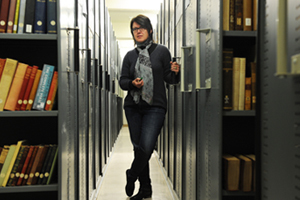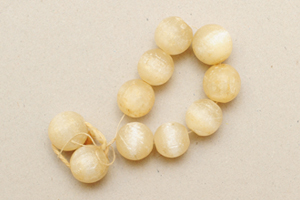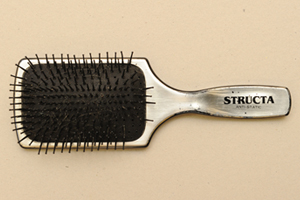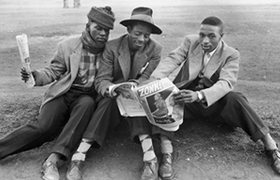Reclaiming the past
17 June 2014
What do we stand to learn from history? For UCT curator-cum-archivist Renate Meyer, the Sankofa bird, a West African symbol, illustrates what she means when she talks about historical archive collections "talking back".
The Sankofa bird flies forwards while looking backwards. The egg in its mouth symbolises the future. "The idea is that you can't look forward unless you look back to see - and in a sense, reclaim - the past," says Renate Meyer, manager of the UCT Libraries' Special Collections and archives, which houses one of the largest ensembles of Africana on the continent.
The past tells us who we are today, and the extensive collections of monographs, periodicals, ephemera, pamphlets, film, sound recordings, maps, conference papers, newspapers and collectables housed in Special Collections "talk back to our past and present".
"They tell us a whole lot about what was happening in our social history," adds Meyer.
Although Special Collections house some rare Africana (there's a Dutch Bible from Antwerp dated 1535), they're also home to some quirky articles.
There's the chip of wood from the tree under which David Livingstone proposed to Mary Moffatt in 1824; a moonstone bracelet that was said to belong to author Olive Schreiner; a collection of activist and trade unionist Ray Alexander's hairbrushes; a microscope which belonged to FG Pearcey and which he used when he accompanied Darwin on the voyage of the Beagle; and a black fountain pen with a gold top used by Queen Elizabeth (the late Queen Mum) to sign the visitors' book in Jagger Library in 1947.
Here are stories yearning to be told. If the bracelet was Schreiner's, who gave it to her? Is there a hint of romance? And hairbrushes as memorabilia of the no-nonsense Alexander? Alexander's papers, at least, provide an answer, and an unexpectedly tender picture emerges. Her husband, Jack Simon, loved to brush her long hair.
The leitmotifs of colonialism and apartheid linger. In the substantial historical maps section, history is shown imprinted on the land.
"Many show the social and racial divisions created through the roads system. NY1, for example, was Native Yard 1, and it's still etched on the city's maps today," said Meyer. "You can call it Steve Biko Drive, but how do we live with the past in ways that are constructive?"
On the day we meet there's an exhibition of art by Charles Davidson Bell (1813-1882), surveyor-general in the Cape, artist and heraldist.
The works are beautifully rendered, but reflect the colonialist's perspective: "The document is historical, but racist in its view," says Meyer. Therein lies a dilemma. "How do we show these objects without perpetuating ways of looking? How do we re-imagine in constructive ways?
"We create frames every day, and these are layered on historical perspectives," Meyer notes.
Housed in the refurbished JW Jagger Building, the collections are made available to users in a magnificent reading room.
The Kipling Collection commemorates the life and work of Rudyard Kipling (1865-1936), and is one of the most important, if not the finest, of the libraries' non-Africana special collections.
"The collection includes not only works Kipling wrote, but those that influenced him and how he worked – it gives a sense of how his breath and hands moved in the world."
Meyer is integrating all this material so that researchers will be able to search these repositories for connected digital, audio and visual material. "We want to get this material into the public space where it can start to make a difference in people's lives."
 |
A moonstone bracelet thought to have belonged to author Olive Schreiner. |
 |
Trade unionist and activist Ray Alexander's hairbrushes. |
 |
A sliver of wood from the tree under which David Livingstone proposed to Mary Moffatt in 1824. |
 |
The microscope that belonged to FG Pearcey, and which he used when he accompanied Charles Darwin on the voyage of the Beagle. |
Story by Helen Swingler. Photos by Michael Hammond.
 This work is licensed under a Creative Commons Attribution-NoDerivatives 4.0 International License.
This work is licensed under a Creative Commons Attribution-NoDerivatives 4.0 International License.
Please view the republishing articles page for more information.









